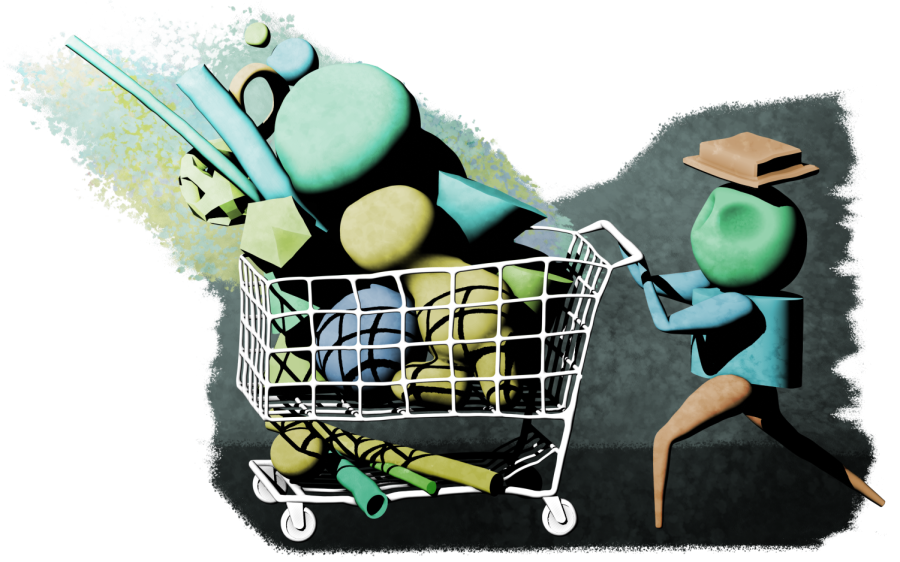Overburdened by Overconsumption
March 6, 2023
From wall-to-wall in my closet sit clothes that I don’t wear, shoes I haven’t touched in years and products that I’ve never even used. Everything I once thought was amazing in the midst of the pandemic is now collecting dust under my bed, emitting a stench of guilt over the worthless buy.
All of the unused products stemmed from the constant production of new clothes and fresh products which is draining our resources, emitting copious amounts of fossil fuels into the atmosphere, and turning consumption into a meaningless commodity. Like anything, the problem isn’t with buying things but with the extreme. The constant consumption of things we don’t need, what we saw on social media, or in an ad on the side of the highway gives way to a society that is entirely built on excess. If we are more thoughtful about what we buy, and businesses switch from constant publishing to slow, high quality products it will reduce the issues of competition and the insistent consumption of goods caused by our capitalistic society.
There hasn’t always been this overabundance of expenditure. According to Business Insider, spending increased by 25.69% from Jan. 2019 to Aug. 2021. The increase in the popularity of social media has played a pivotal role in this uptick. Social media like Tik Tok, has promoted the popularity of overconsumption, with seemingly endless videos of unboxings, try on hauls, and product ads produced from trends that rise and fall within the week. The outfit that is all over my “For You” page one day is wiped from existence the next, and with the way trends have been changing faster than ever, according to an article by Vice, clothes that are popular one week end up in a landfill the next. This insatiable need to buy the newest thing and to own what everyone else has is practically the definition of materialism, and with the constant demand for new, companies are taking shortcuts.
Fast fashion companies are more popular than ever; with it comes cheap manufacturing, labor, and a lot of sales. Companies like Shein and H&M constantly drop new lines of clothes to fit into whatever is currently popular, contributing to the 11.3 million tons of municipal solid waste of textiles in landfills in 2018, according to the United States Environmental Protection Agency.
There are certainly pros to fast fashion, but they don’t always outweigh the cons. Fast fashion can provide you with an entire new, trendy outfit for less than $20 compared to slow fashion where an entire outfit might cost upwards of $100 that will no longer be popular within a month.
Unfortunately, cheap clothing isn’t sustainable, not just for the planet, but for your wallet. Eventually, these pieces of clothing and products will deteriorate and fall apart at the seams. Having to constantly buy new apparel rather than re-wearing long-lasting clothing and reusing high-quality products eventually outweighs the cheap, quick buy. The excess created has also resulted in an economy based around “too much.”
However, if we try to reduce our buying too much, it will ruin our economy. Additionally, according to an article by Business Insider, an excess of products being produced with no one rich enough to buy them contributed to the Great Depression. Even so, people aren’t going to stop buying overnight, but finding a way to shift our economy away from fast, cheap production towards more high-quality products will boost global economies. Without fast fashion, companies will need to focus on a more circular economy that produces higher quality jobs and keeps products in the market.
Downsizing on what we buy, and making each purchase we buy meaningful is what is going to help us make sure our economy, environment, and livelihoods are stable. Choosing what we buy today safeguards our ability to live tomorrow.


